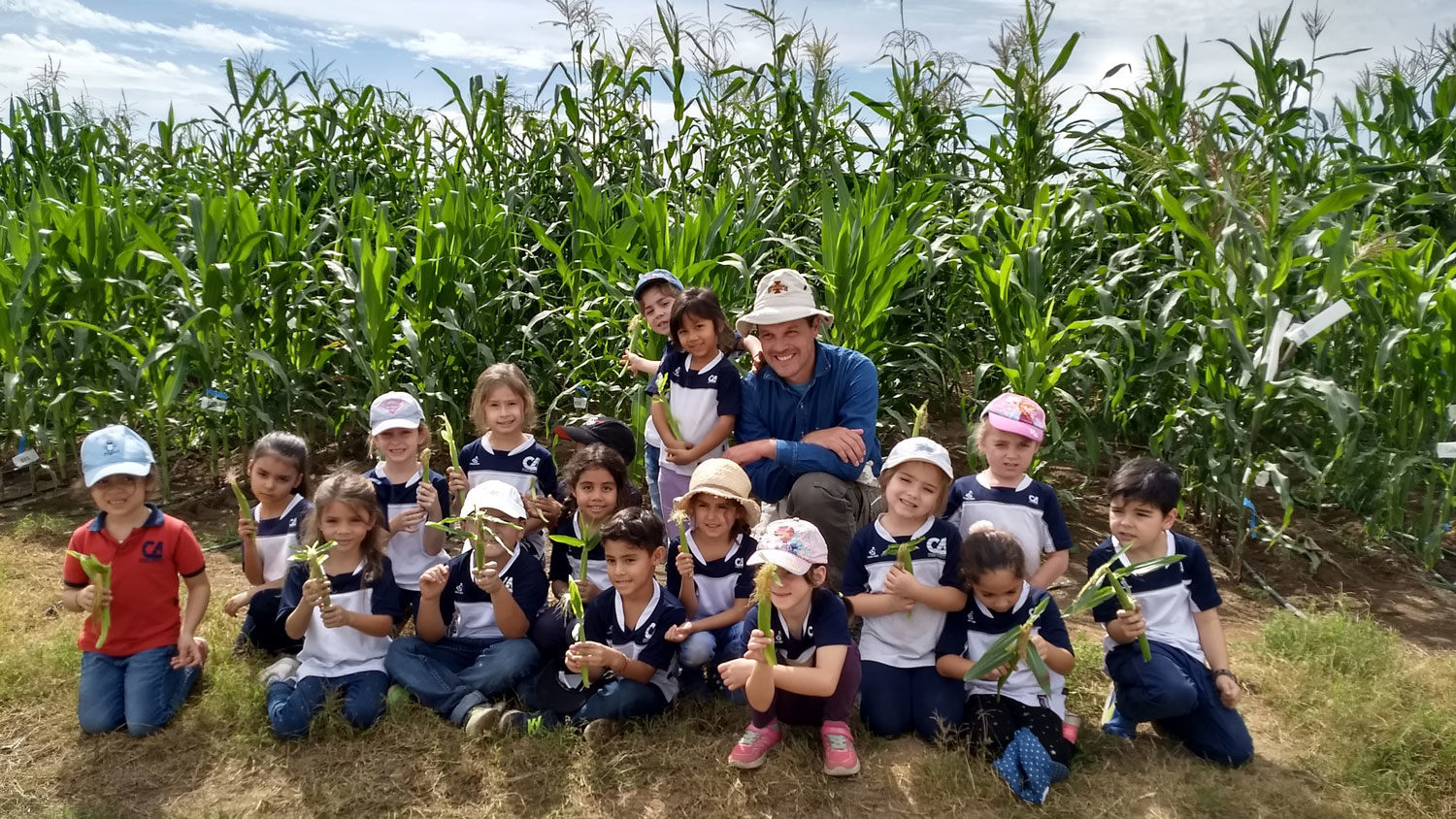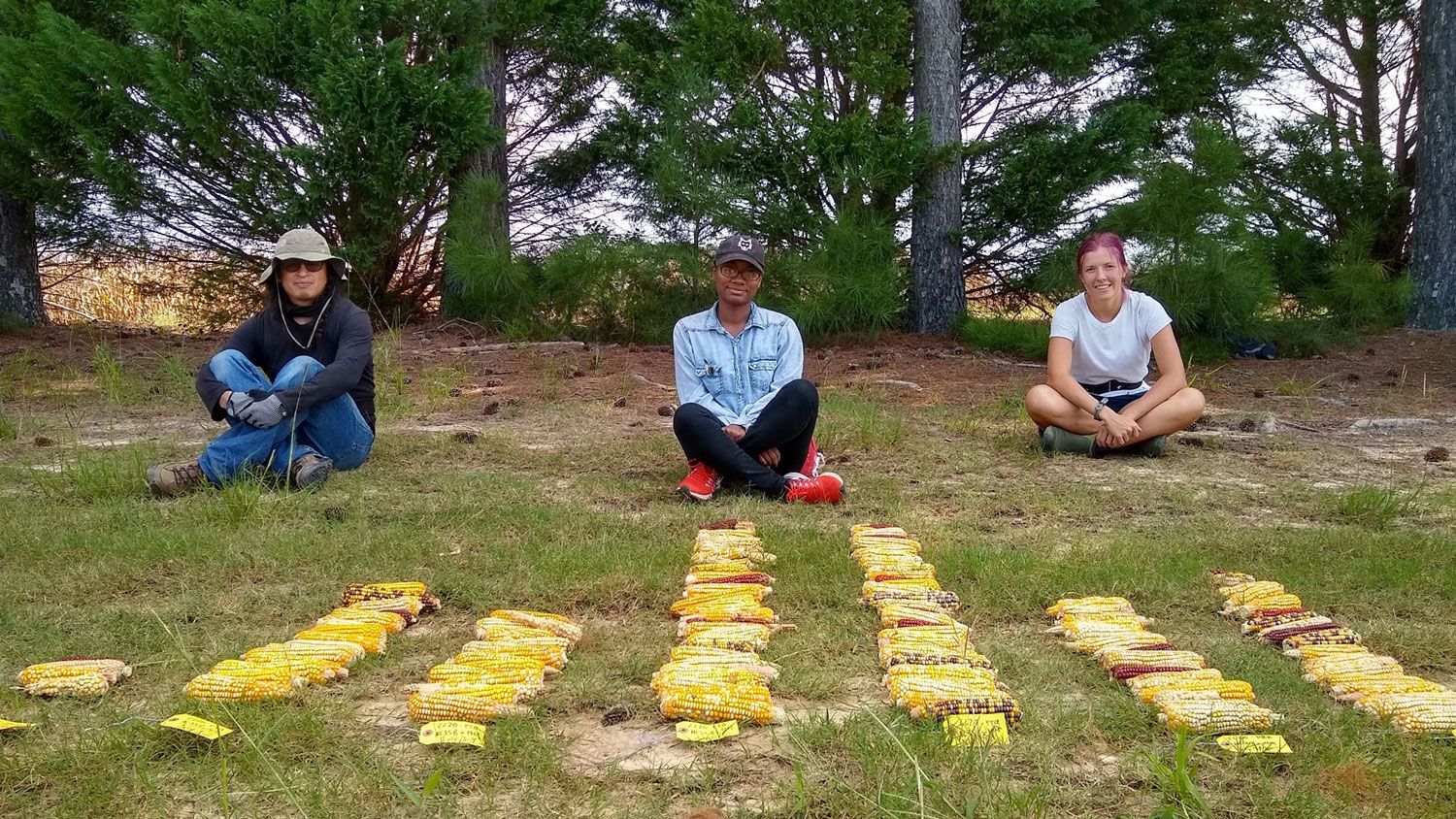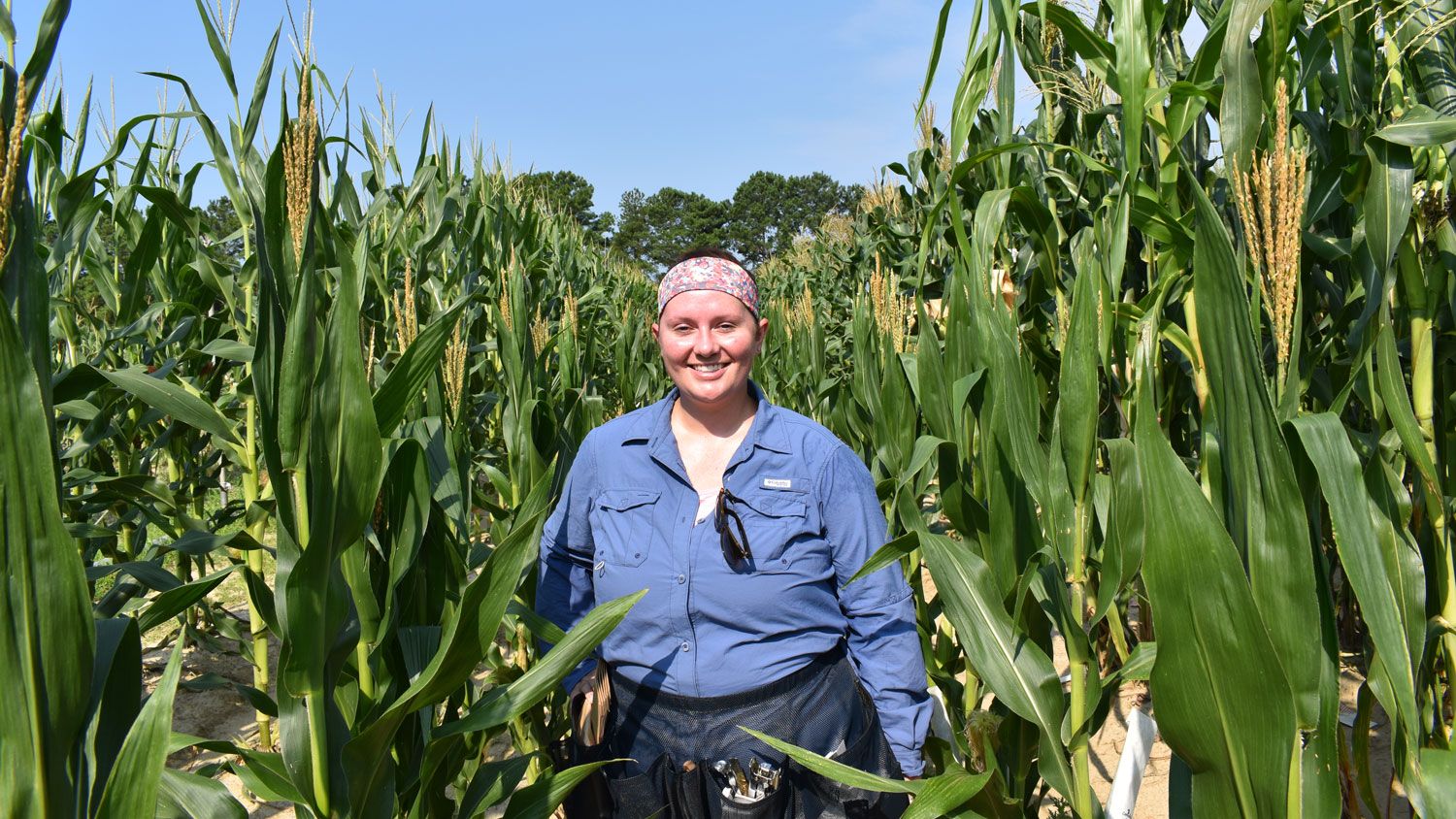Faculty Focus: Rellán-Álvarez Discusses Maize Research

From earning his bachelor’s, master’s and PhD degrees in Spain, to completing his postdoctoral work at the Carnegie Institution in Stanford, California, Rubén Rellán-Álvarez brings plenty of diverse thought, creativity and teaching to the College of Agriculture and Life Sciences’ Department of Molecular and Structural Biochemistry. Prior to joining CALS in January 2019, Álvarez started a lab in Mexico in 2015 at the National Laboratory of Genomics for Biodiversity.
What attracted you to NC State?
The job matched well with the work I was doing in my lab in Mexico. The Biochemistry Department was looking for someone working on crop abiotic stress and processes related to changes in metabolism as it relates to adaptation to different abiotic stresses in crops. The research program in Mexico is geared toward understanding the genetic basis of a natural variation of lipids in maize and its role in the process of maize adaptation to different environments. NC State is well known for the work that pioneers, like Major Goodman, have done in understanding maize diversity and how we can use this diversity for practical breeding applications. There were many aspects that convinced me that NC State and CALS was the perfect place to further develop our research program, including the possibility to collaborate with colleagues like James Holland, Peter Balint-Kurti and Matt Krakowski, also working in different areas of maize diversity. The excellent support provided by the CALS/NCDA network of research stations across the state and the decisive support and enthusiasm from my department in particular and the plant biology community has only affirmed my decision to come here.
Tell us more about what you’re currently working on?
My lab consists of NSF postdoc Allison Barnes, graduate students Fausto Rodríguez-Zapata and Andi Kur and myself. We are interested in maize adaptation to soils with low phosphorus availability and low temperatures.
Our research focuses on understanding the genetic, evolutionary and physiological mechanisms involved in plants adaptation to abiotic stresses. We use a combination of quantitative and population genetics together with high precision metabolic phenotyping to identify loci that have been under selection during adaptation to particular environments and that are involved in the determination of metabolic traits. In particular, we are using maize glycerolipid remodelling during the process of maize adaptation to different highland environments across the Americas. We have identified loci that explain distinct glycerolipid patterns in highland maize and want to understand their contribution to maize adaptation to highland conditions and transferring beneficial alleles to modern maize varieties.

Allison Barnes is working in the functional characterization of a candidate gene involved in the determination of phospholipid/lyso-phospholipid ratios. She uses a combination of tools including heterologous expression of maize genes in yeast and CRISPR-CAS9 knockout mutants in maize.
Fausto Rodríguez-Zápata uses a combination of ecological, population and quantitative genetics to study maize adaptation to soils with low phosphorus availability.
Andi Kur has just recently joined the lab. While the specific project she will be working on is still yet to be defined, she will probably be working with some of the maize landrace mapping populations our lab has developed to dissect the genetic changes involved in maize local adaptation.

Why is having different varieties of maize important?
It’s important at many different levels. Maize is a great system to study basic evolutionary processes. After being domesticated in the tropics in Mexico, it moved south through Central America and South America while also moving north into the United States. Maize adapted also to high elevations reaching environments very different from the original domestication site. Adaptation to these different environments was made possible by genetic and physiological changes. From a more applied point of view, understanding this genetic variation is relevant to be able to use it to increase the genetic diversity of the U.S. breeding pool. As I mentioned earlier, this is something that colleagues at NC State, Goodman and Holland have been working on for decades, and I feel fortunate to be able to contribute to this important line of research.
Why did you choose this specific field of work/research?
I was very interested in studying stress responses due to heavy metal contamination. I did a little bit of work on the physiology of heavy metals and toxicity on maize. Maize is such a charismatic, marvelous species to work with for a number of reasons, some of which I already mentioned. Particularly in places like Mexico, you see corn everywhere. It’s interconnected with the cuisine but also with the culture of the different people that live across the country. As a model species to study basic genetic processes, maize allows easy crossing [the male (tassel) and female (ear) organs are separated]. This has allowed maize researchers to generate large genetic mapping populations and diversity panels like the Nested Association Mapping population that was developed at NC State.
Many maize researchers and I agree that there is something about the human-like size of the maize plant and the hand-like size of an ear of corn that allows us to develop a close relationship with maize. As we develop a mapping population or work with a particular mutant and grow that material, nursery after nursery, and we collect more and more data, it allows us to understand and discover the genetics and physiological processes of the material we work with and how it interacts with the environment. It grows that sense of feeling for the organism. I believe there is no better genetics textbook than a maize nursery.
This post was originally published in College of Agriculture and Life Sciences News.
- Categories: